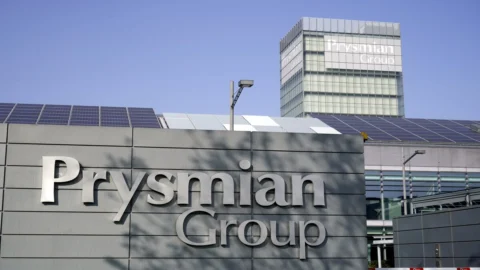Over the past two decades Roma suffered more than the entire nation and its European partners than one low productivity growth, but still retains a broad potential capable of relaunching its development. This is the photograph taken from the report “The economy of Rome in the XNUMXs. Structural changes, labor market, inequalities" created by Bank of Italy and presented to the Rome Chamber of Commerce according to which the capital has all the ingredients for success but the wrong recipe to achieve it.
“Today Rome's economy is substantially supported by tourism but we must bring the growth and development of the entrepreneurial system back to the centre. We must work to build an environment that favors investments – said the president of Unindustria Angelo Camilli during the presentation of the report at the headquarters of the Rome Chamber of Commerce - and, in view of the investments that are expected in the next ten years between the Jubilee, Pnrr and possibly Expo 2030, we must move from a logic of public spending and grounding of investments to the creation of a structural project that thinks about the future".
Rome stopped
Compared to other major metropolitan cities, the Capital has recorded an expansion in the level of economic activity much lower than the growth in the number of employed. Over the course of almost twenty years, up to 2018, Rome's GDP per capita decreased by 11%. The decline in Rome was contrasted by the growth recorded in the other capitals, proving to have been affected more than other cities by the economic crises that occurred over the twenty-year period: the downward phase began with the global financial crisis of 2008-09 and worsened after 2011.
A dynamic of productivity unsatisfactory. Measured as the ratio between GDP and number of employed, labor productivity decreased by 15,8%, compared to the increases recorded by Berlin, Madrid and especially Paris. All this has led to a worsening of the quality of life. Based on the European Commission survey, in 2004 approximately 92% of the inhabitants were satisfied with life in Rome, dropping to 15% after 74,2 years.
Rome vs Milan
In discussion panel with Milano, Roma loses due to lower disposable income per capita and lower wealth. Furthermore, the gap with the Lombardy capital has widened in terms of propensity to patent and mobility of graduates. But the gap emerges above all in the offer of urban services: Rome appears to have a deficit in terms of seat-kilometres offered by local public transport, with a gap already present in 2010 and which has widened over time. Not only. The gap with Milan in the system remains education, mainly due to a lower rate of resident graduates and a higher percentage of NEETs (young people who do not work or study), and in that sanitary, due to greater mortality from road accidents. Points in Rome's favor are: safety and environmental protection (fewer crimes and a lower level of pollution) and the balance between open and closed companies: positive and particularly high, higher than that recorded in other metropolitan cities, including Milan
Rome's economy remains weak: here's why
Various factors have had a negative impact on Rome's productivity, among the most important Via Nazionale highlights: the decline in investment public, largely due to the fiscal consolidation implemented at all levels of government (more marked than what occurred in other areas); L'occupation it has shrunk in industry and grown in lower knowledge-intensive services (a lower productivity), partly driven by the expansion of tourism, where mainly workers carrying out less qualified professions are employed (while in Milan exactly the opposite happened); the decline in private investment; the disappointing performance of large companies, especially those publicly owned which in Rome represent almost half of the turnover produced by non-financial companies. These structural changes were reflected (in the period 2011-19) in a greater polarization of the labor market towards high and low professional qualifications more intensely than in Milan and Italy, but also of an increase in the already marked income inequalities, remaining higher than that of Milan and Italy, and which can undermine social cohesion and further hinder public action.
Strength points
Despite these critical issues, the capital's economy still shows a series of strengths. Bank of Italy recalls the high specialization in knowledge-intensive services, a strong presence of highly qualified workers, research institutions and universities of primary importance, even in international comparison, a lively birth rate of businesses, even in the most innovative, and a notable internationalization of companies.
What can be done to relaunch the city of Rome?
According to Bank of Italy it is necessary to remove the main obstacles that stand in the way of recovering the overall efficiency of the urban economic system and adopt some interventions priorities. How to equip the Capital with an efficient public administrative apparatus and improve the quality of local public services. To this end, on the one hand, a wider use of digital technologies and qualified figures who can also allow for a more efficient exploitation of the opportunities offered by digitalisation are helpful; on the other hand, interventions are appropriate to improve physical infrastructures, penalized by low rates of public investment, for example in the transport and education sectors, and actions aimed at increasing the efficiency of investee companies.
The role of the Pnrr
Where to start again, then? In this framework, the National recovery and resilience plan (Pnrr) can represent a more unique than rare opportunity. Starting a process of modernization of public administration can have a direct effect on productivity of the local economic system and trigger virtuous cycles by improving the ability to attract private capital and qualified workers. Secondly, it is necessary to strengthen those activities that guarantee more sustained economic growth, such as more knowledge-intensive services (greater productivity) in which Rome is still specialized, such as IT, telecommunications, audiovisual, healthcare , cultural activities, research and development, business consultancy. Furthermore, it is appropriate to strengthen the business system helping the dimensional growth of companies, to consolidate the local entrepreneurial fabric which is still very polarized between very large units and those with a very small scale, in particular by acting in the most advanced sectors which, unlike the traditional ones, have recorded a decline in the average size over the last 20 years. In this area, the growth in size of innovative startups deserves particular attention, as they show high vitality in Rome. Finally, there is the chapter – the engine of the Roman economy – which must be managed and governed to mitigate the low spending capacity often recorded among the large masses of visitors.





